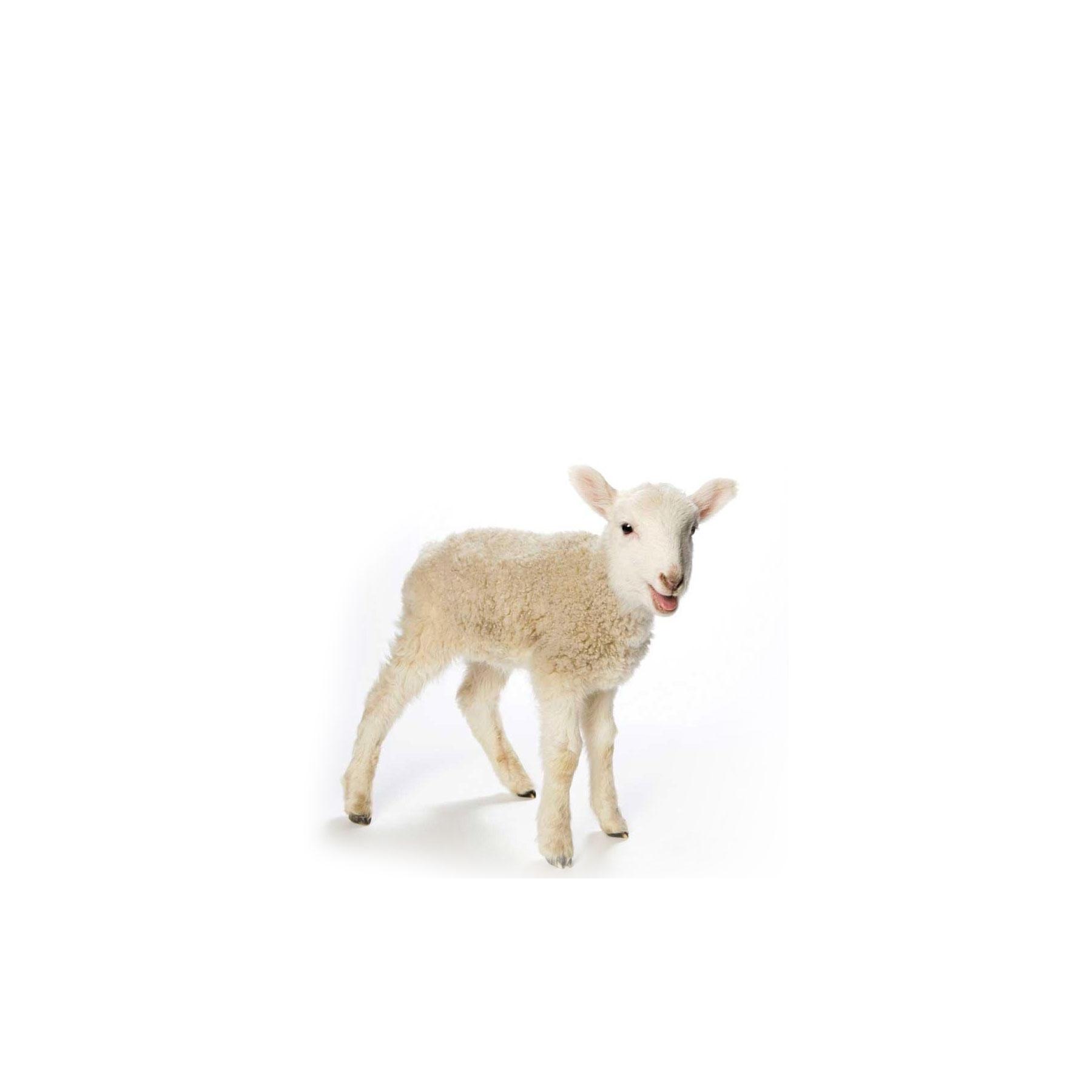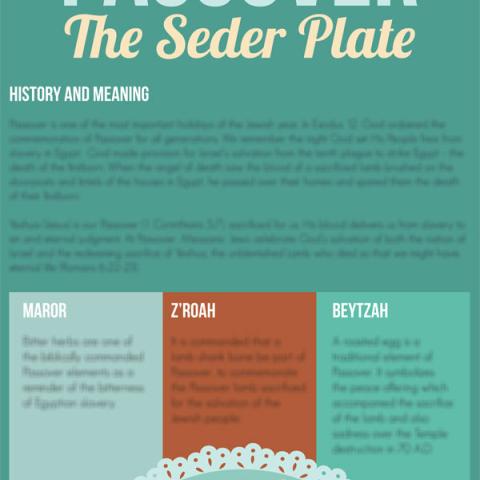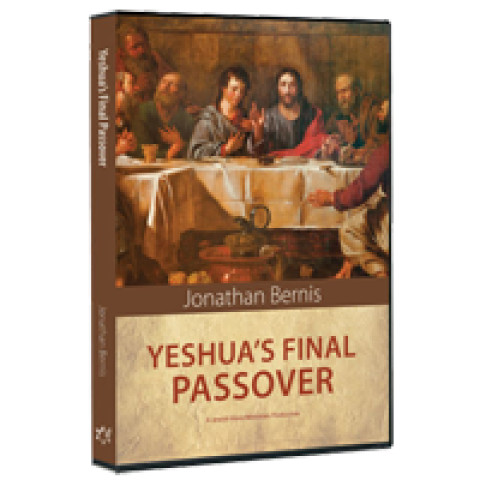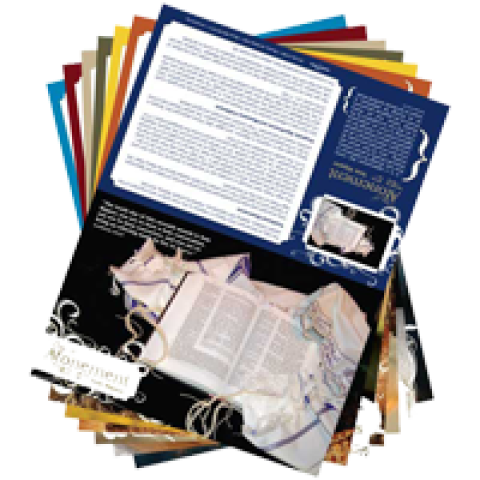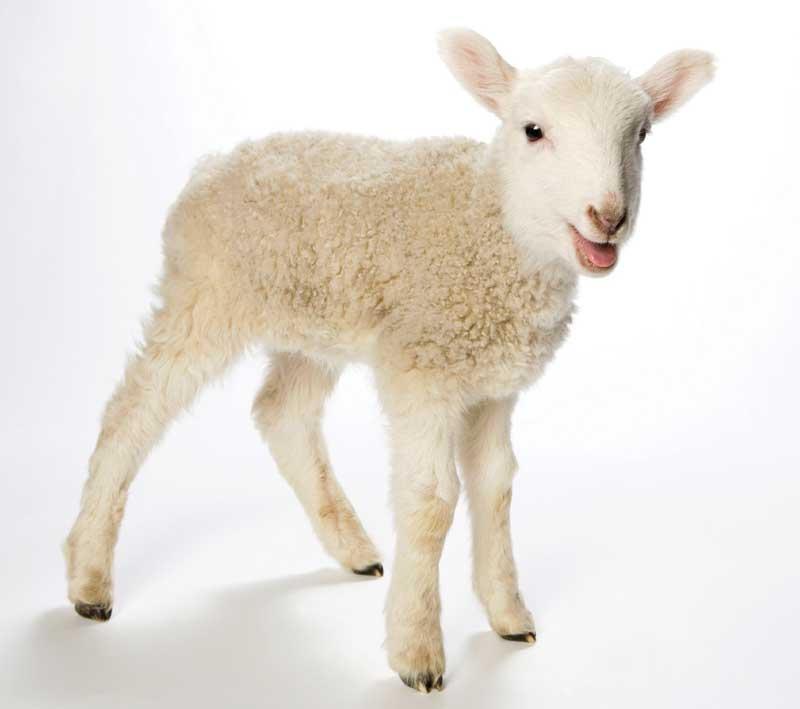
The LORD said to Moses and Aaron in Egypt, “This month is to be for you the first month, the first month of your year. Tell the whole community of Israel that on the tenth day of this month each man is to take a lamb for his family, one for each household. The animals you choose must be year-old males without defect. Take care of them until the fourteenth day of the month, when all the people of the community of Israel must slaughter them at twilight. Then they are to take some of the blood and put it on the sides and tops of the doorframes of the houses where they eat the lambs…and when I see the blood, I will pass over you.”– Exodus 12:1-3, 5-6, 13 NIV
The Passover Exodus is the watershed event in Jewish history. Indeed, it is a momentous event for all mankind. Many Believers don’t fully comprehend the Passover in the context of the awesome atoning work of God. You cannot fully appreciate our redemption in the Messiah until you understand the ordinance of Passover. All the biblical Feasts and observances were foreshadows of the redemptive work that the Messiah would ultimately accomplish. The gospel of John uses the Passover as the backdrop for his retelling of the atonement we have received through Jesus our Messiah.
The apostle Paul, an Orthodox Jewish Rabbi, wrote, “For Messiah, our Passover lamb, has been sacrificed” (1 Cor. 5:7). In his mind and the minds of the authors of the Gospels, a clear prophetic connection existed between the death, burial, and resurrection of the Messiah and Yeshua’s ultimate fulfillment of the Passover.
The word Passover comes from the Hebrew “Pesach,” which means “to pass over.” Interestingly, the Aramaic word for lamb is “talya,” which can mean either lamb or servant. The passage in Isaiah 53, referred to as “The Suffering Servant,” describes Yeshua as a Lamb led to the slaughter, and He is referred to as “the Lamb” not less than 34 times in the New Testament. The parallels between the Passover lamb and Yeshua are extraordinary. Let’s take a look.
Get the Passover Infographic
This enlightening infographic will teach you the meaning of the Passover seder plate, the elements to include and the significance behind them.
Unblemished
The animals you choose must be year-old males without defect, and you may take them from the sheep or the goats. —Exodus 12:5
The Passover lamb, according to the ordinance of Pesach, was to be in the prime of life and without blemish. Blemish refers to sin. Yeshua, our final and perfect atonement lived a sinless life.
We are told that we have been redeemed out of sin—not with corruptible things such as silver and gold, but with the precious blood of the Messiah—as a lamb “without blemish or defect” (1 Peter 1:19). Why? Because “God made him who had no sin to be sin for us, so that in him we might become the righteousness of God” (2 Cor. 5:21).
Tell the whole community of Israel that on the tenth day of this month each man is to take a lamb for his family, one for each household.– Exodus 12:3
Each Household Needed A Lamb
The Word of God is explicit in the Prophets and in the New Covenant that all have sinned and fallen short of the glory of God. There is not one who is righteous. Everyone needs atonement to have a personal relationship with God. Just as each household required a lamb, the Word of God is clear that every individual needs atonement, a sacrifice for his sin. What we consider our righteousness before Him is really “as filthy rags” (Is. 64:6).
The Community of Israel Required A Lamb
When all the people of the community of Israel…—Exodus 12:6
Erroneous anti-Semitic doctrine says the Jewish people killed Jesus. In much of Europe during World War II, Jewish people were not permitted to live—for no reason except they were Jewish. They were called “Christ-killers.” This concept was not new. This erroneous theology that the Jewish people had killed Jesus began in the early Church. But is this true? No.
Matthew 20:19 says He would be turned “over to the Gentiles to be mocked and flogged and crucified. On the third day he will be raised to life!” Did the Gentiles kill Yeshua? No. So who killed Jesus?
Exodus 12:6 says that all the people of the community of Israel must slaughter the “Passover lamb.” Messiah, our Passover Lamb, died for the sins of all the world so those who believe in Him shall not perish but have everlasting life. Yeshua said in John 10:17-18 that He alone had the authority to end His life. He laid down His life freely in order that the Scriptures would be fulfilled. Without His sacrificial act, we would have no redemption. The assembly killed Yeshua because He had to die—and chose to die for us as our Passover Lamb.
Get Yeshua's Final Passover DVD
In this inspirational DVD, filmed on location in Jerusalem in the Upper Room, Rabbi Jonathan Bernis teaches us how to observe the rich traditions of the Passover Seder — just as Yeshua (Jesus) did with His disciples over 2,000 years ago, known as the Last Supper.
The Passover Lamb Was to be Slain in the Evening, But Not to Remain Until Morning
Do not leave any of it till morning (the Passover lamb)… —Exodus 12:10
The Gospels make it clear that Yeshua is the sacrificial Passover Lamb. They record that He was crucified at the same time the other lambs were slaughtered. He hung upon the Roman execution stake, upon which victims would suffer, yet not die for many hours. Executioners typically broke the victim’s legs to hasten death, yet the Passover lamb was not to have any broken bones. The Gospels tell us that the legs of the prisoners on either side of Jesus had to be broken, but when the Roman soldiers came to Yeshua, they found that he was already dead, [and] they did not break his legs” (John 19:33). Even in this detail we have a record of Yeshua fulfilling the ordinance of Passover. He also fulfilled another Passover statute when He was removed from the tree before evening.
When I See the Blood…
…When I see the blood, I will pass over you. —Exodus 12:13
Without the shedding of blood there is no atonement. He recognized that no man could keep His Law perfectly. But at the center of the Law is God’s gracious provision: Life for life.
In each of the homes of the Israelites and Egyptians that first Passover night, an innocent life had to be taken to spare the life of the firstborn of each family. Here again is a fundamental principle of the Good News—all have sinned and are guilty.
God has pronounced judgment on all. He makes no distinction between Jew or Gentile. It is not by works that we obtain right standing before God. It is a gift of God himself. The wages of sin is death. This was God’s judgment upon the inhabitants of Egypt—Egyptians and Israelites alike.
That night the Angel of Death was to smite the firstborn, including the Israelites. But the blood was to be a token upon the houses. God promised: “When I see the blood, I will pass over...” (Ex. 12:13). This is the very center of Passover and the Good News—in this the Gospel is summed up.
I never learned these things growing up. Passover to me meant the meal and getting together with family, but I had no concept in my Judaism of blood or sin. Although I was taught about the God of Abraham, Isaac, and Jacob and learned about the biblical figures, I never understood that God is alive and His Word is alive and I am a sinful being in need of atonement. I never appreciated that deliverance in a deep and meaningful way.
The Church also lacks that appreciation. If we don’t appreciate the Old Covenant Scriptures, then we have missed the deep understanding of God’s character as Deliverer and Provider.
We are told by the Prophets 750 years before Yeshua was born that One without sin would come and die for our sins. Although He was sinless, it pleased God to bruise Him and to lay upon Him the iniquity of us all (Isaiah 53).
Yeshua said, “I am the door; by me if any man enter in, he shall be saved” (John 10:9 KJV). Why? Because He is the Passover Lamb who has shed His blood so that when we apply it to the doorposts of our heart, the Angel of Death passes over.
Get the Biblical Feast Tent Cards
Discover the significance of Jewish feasts with these beautifully designed table-top tent cards.
"The time is coming,” declares the LORD, “when I will make a new covenant with the house of Israel and with the house of Judah. It will not be like the covenant I made with their forefathers when I took them by the hand to lead them out of Egypt, because they broke my covenant… I will forgive their wickedness and will remember their sins no more."– Jeremiah 31:31, 34
The Good News
Jeremiah expresses the expectation of the Jewish Messiah who has brought about this New Covenant through His blood, by which all may receive forgiveness. The Prophet reveals that God’s own Torah will be written on our hearts. A Jew without a Messiah is as incomplete as Christianity without its Jewish root.
It is rooted in Judaism that we understand the sinful condition of mankind and the glorious graciousness of God, who provided this atonement in the death and resurrection of His own flesh. We must understand the Old Covenant and the grace of God to comprehend and appreciate the New Covenant.
This is what the Passover service teaches us, taking us through the story of the deliverance of the Hebrew children by the hand and grace of God. This deliverance is not only out of the land of Egypt, but also from death—by the blood of the Passover Lamb. As you celebrate the Passover, you will see this great miracle and gain a greater understanding of God’s love for mankind.
Yeshua (Jesus) is the Jewish Messiah. He is the God-given Passover Lamb, provided to the Jewish people and to the world through His atonement. When God sees the blood applied to the doorposts of our heart, the Angel of Death will pass over.
This is the declaration of Passover: The grace and power of God unto salvation!



